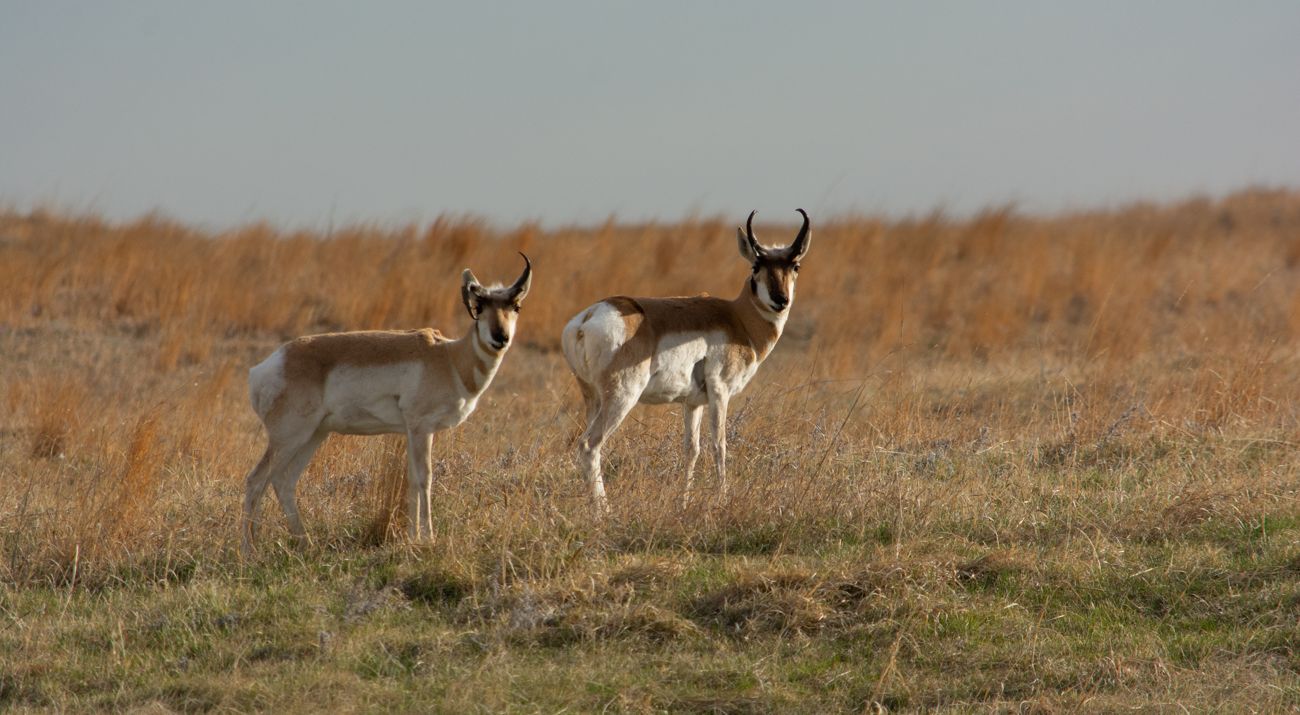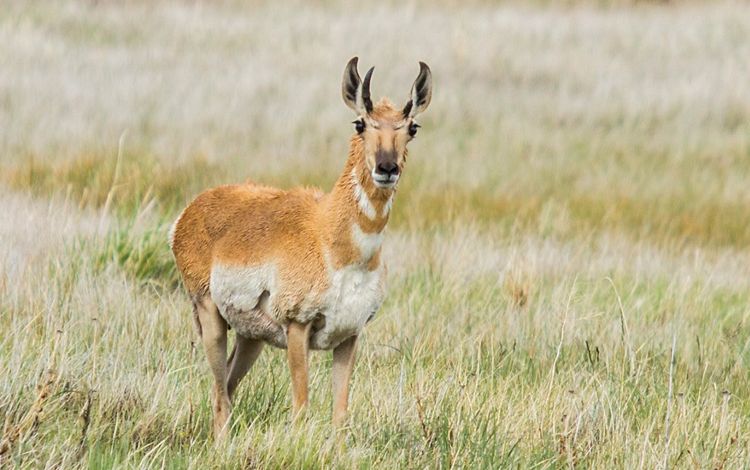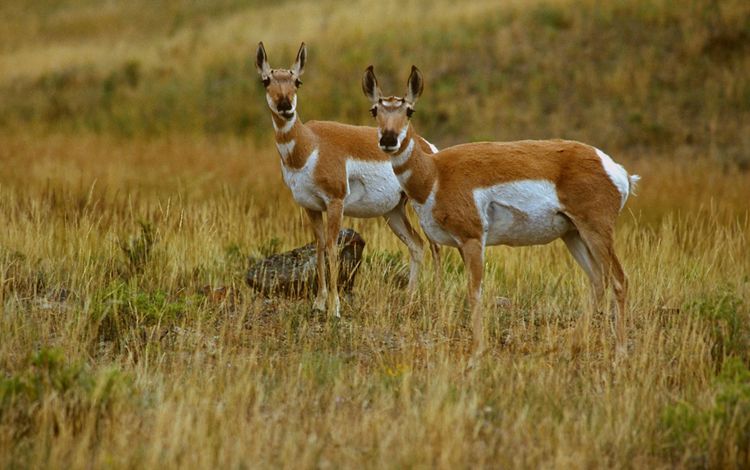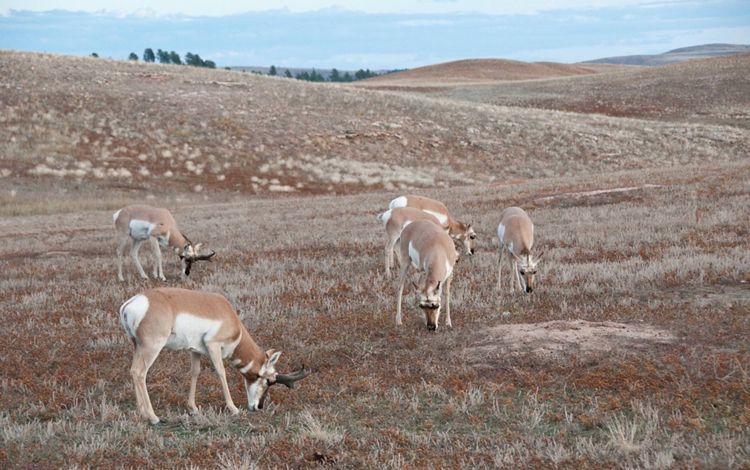
Meet the Pronghorn
Pronghorn are best known as the second-fastest land mammal on Earth. They are hoofed herbivores measuring three feet tall and weighing up to 150 pounds. Pronghorn have roamed North America for millennia. They were contemporaries of the long-extinct Wooly Mammoth and Saber-toothed cat. Scientists theorize there was one major trait that allowed them to win the evolutionary race: Speed. Their ability to run up to 60 miles an hour makes pronghorn second only to cheetahs as the planet’s fastest land animals. It also earned them monikers such as “speed goat” and “sagebrush rocket.”
As seasons change, herds of pronghorn migrate hundreds of miles to escape deep snow cover that makes grazing impossible. They are creatures of habit and tend to return to migrate the same route year after year—and condition their young to do the same.



Protecting the Pronghorn
With pronghorn seasonally migrating more than 200 miles each way between their summer grounds in Canada and their wintering grounds in Montana, eliminating obstacles to their movement can be a matter of life and death.
Habitat fragmentation in the form of agricultural fences—particularly barbed ones—pose a dangerous threat because pronghorn can’t jump. Finding a route around these barriers wastes energy and calories that the animals need in order to survive the journey.
Fortunately for pronghorn, small changes can make a big difference. Switching out or modifying fences so that pronghorn can crawl under, rather than jump over, makes a huge difference.
The Nature Conservancy has already started modifying fences at our Matador Ranch in Montana, taking down miles of woven wire fencing and replacing it with wildlife-friendly fencing.
We’re also partnering with other organizations to study herds in Arizona to assess other threats to the species. This includes habitat viability analysis, movement and behavioral research and on-the-ground management activities with private landowners aimed at improving habitat conditions. The ultimate goal of this work is to provide information that will enable effective management of the Big Chino Valley pronghorn herd and to leverage conservation of habitat needed to sustain the herd by encouraging community land-use planning and engaging landowners in voluntary land conservation.